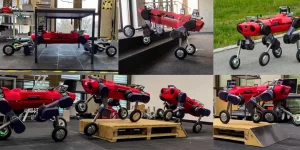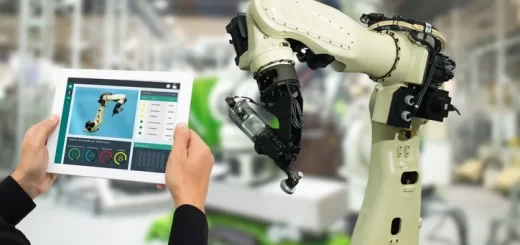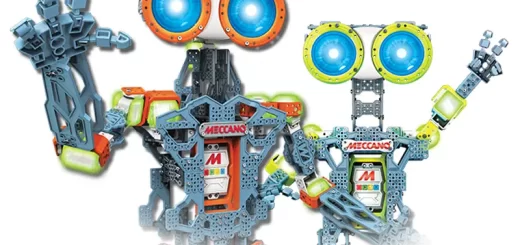Wheeled robots types, uses, advantages and disadvantages
Wheeled robots can change their positions with the help of their wheels, Wheeled robot motion can be achieved easily and its cost is pretty low, control of wheeled movement is easier, So, wheeled robots are one of the most frequently seen robots, Single-wheeled robots, mobile ball robots, two-wheeled robots, three-wheeled robots, four-wheeled robots and multi-wheeled robots are examples of wheeled robots.
Wheeled robots
Wheeled robots are robots that can move on the ground with the use of their motorized wheels to propel themselves, This design is preferred because it is simpler than legged designs, Design, production, and programming processes for moving on flat terrain are easier, and wheeled robots can be controlled easily than other robot types.
Wheeled robots advantages
Wheeled robots are most popular among the consumer market, They offer low cost and simplicity, They come with any number of wheels, but three wheels are sufficient for static and dynamic balance, Additional wheels can add to the balance, and Additional mechanisms will be required to keep all the wheels in the ground when the terrain is not flat, Wheeled robot design is preferred due to simple locomotion mechanism, It can use various locomotion methods depending on their number of wheels.
Two-wheeled robots control their heading by differential steering method, This method can be used in three-wheeled and four-wheeled robots, Besides the differential steering method, four-wheeled robots can implement car-like steering methods, Similar to four-wheeled robots, multi-wheeled robots can implement both differential steering and car like steering methods.
The wheels facilitate movement by reducing friction, Many robots are designed with 3 wheels, 2 motors, and 2-speed controllers, Wheels help to move quickly, They are easily controlled, spin on the spot, or turn around in small places and they help in steering compared to tracks.
Wheels are used due to their low production costs, this is the case if we compare the prices for wheels and tracks, the wheels need a lower amount of torque to move on from stationary, The wheels offer high maneuverability compared with continuous tracks, and the tracks are very difficult in maneuverability.
Many materials can be used to build wheels that meet environmental conditions, The wheels are lighter than tracks, So, wheels are used when the mass of the robot is a critical property, such as in space exploration missions, The wheel comes with fewer moving parts, So there are fewer components that can get damaged.
Wheeled robots types
Many wheeled robots use differential steering, which uses separately driven wheels for movement, They can change direction by rotating each wheel at a different speed, There are additional wheels that help keep it balanced and they are not driven by a motor.
One Wheel robot
One-wheeled robots are difficult to keep balanced due to the single point of contact with the ground, They have only one wheel, It is easier to use a spherical wheel rather than a typical disc wheel, as the robot can move in any direction along the sphere, Gyroscopes and counter-torque mechanisms can keep the robot upright.
Two-wheeled robots
Two-wheeled robots are simple, They have their wheels parallel to each other, and they are called dicycles, or one wheel in front of the other, the robot that has left and right wheels, comes with at least two sensors, The tilt sensor is used to determine tilt angle and wheel encoders keep track of the position of the platform of the robot.
Two-wheel robots are extremely popular nowadays due to their efficient design, All you need is a couple of motors and two wheels to move around, but they also have their own drawbacks, Two-wheeled robots are harder to balance than other types, they use two wheels and should keep moving to maintain its upright position, To make it more stable, batteries from which they are powered are mounted directly below their bodies.
Roombas are two-wheeled vacuum cleaners that automatically move around cleaning up a room, They use a contact sensor in the front and an infrared sensor on its top, Segways are self-balancing dicycle electric vehicles, Ghost Rider was the only two-wheeled robot that entered the Darpa Grand 2005 Challenge, It was unique because of its motorcycle design, but the wheel alignment is front and back, that makes it harder to balance as it turns, and its design is less common than that of a dicycle.
Three Wheel Robots
Three-wheel robots are of two types based on the nature of steered wheels, The first type comes with wheels that are separately powered and the third is free-rotating purely for balance, the second type comes with two wheels that are powered by one source and different source for the third wheel.
The direction of the robot can be altered by changing the relative rate at which the two powered wheels are rotating, it will continue to go straight when two wheels have the same rate of rotation and the same direction.
Omni Wheels robots
Omni Wheels are another option for wheeled robots, An Omni wheel has an axis perpendicular to the axis of the core wheel, Which allows the wheels to move in two directions, Omni-wheeled robots can move at any angle in any direction, without rotating beforehand.
Some Omni wheel robots use a triangular platform, with the three wheels spaced at 60-degree angles, The benefits of using 3 wheels and not 4 are that they are cheaper, 3 points can be used on the same plane and only one wheel will be rotating in the direction of travel.
The drawbacks of using Omni wheels are that they have poor efficiency due to not all the wheels rotating in the direction of movement, which also causes loss from friction, and they are more computationally complex because of the angle calculations of movement, The free rotating rollers allow the wheel to slide laterally.
4-wheel drive robots
4 wheel drive robot comes with 2 pairs of powered wheels, Each pair can turn in the same direction If the pairs don’t run at the same speed, the robot will slow and won’t be able to drive straight, A good design will have to incorporate some form of car-like steering, Differential Steering method allows the robot to turn in the same way the car does, when your robot is powered by a combustion engine, It only needs one motor.
Disadvantages of wheeled robots
Wheeled robots can not navigate well over obstacles, and this is the main drawback of this type, depending on the terrain, such as rocky terrain, sharp declines, or areas with low friction, There are some situations where the wheels are not the best choice, The robot needs to pass small or large obstacles, Wheeled robots are useless in terrains that are not flat and have low friction coefficient, For a wheel to get over a vertical obstacle, it has to be at least twice as tall as the vertical obstacle.
Wheeled robots examples
Wheeled robots are versatile, efficient, and widely used in various applications.
1. Loona Robot
Loona robot is an AI-powered robotic pet. It has an expressive digital face, autonomous movement, obstacle avoidance, voice/gesture control, and app connectivity. It is used in entertainment, companionship, and basic education in robotics.
2. Pepper Robot (SoftBank Robotics)
Pepper Robot is used in social interaction and customer service. It is used in hospitality, retail, and education. It offers emotion recognition, conversational AI, a touchscreen display, and autonomous navigation on wheels.
3. Vector Robot (by Anki & Digital Dream Labs)
Vector robot is a smart AI assistant and companion. It is a small tabletop robot with voice recognition, facial recognition, AI-driven personality, and interactive responses. It is used in home assistant, entertainment, and basic AI learning.
4. Temi Robot
Temi Robot is a personal assistant robot. It offers autonomous navigation, video calls, smart home control, and voice assistant integration. It is used in home and office assistance, and healthcare support.
5. Whiz Robot (SoftBank Robotics)
Whiz Robot is an autonomous commercial cleaning robot. It is used for AI-powered vacuums, automated floor cleaning, and obstacle avoidance. It is used in Offices, malls, hospitals, and airports.
6. TurtleBot (Open-Source Robotics Platform)
TurtleBot is used in research and development in robotics. It offers ROS-based, LiDAR navigation, camera vision, and programmable AI. It is used in AI, SLAM (Simultaneous Localization and Mapping), and academic robotics projects.
7. Roomba (iRobot)
Roomba is an autonomous vacuum-cleaning robot. It offers smart navigation, automated cleaning, and app control. It is used in Home cleaning automation.
8. Boston Dynamics’ Stretch Robot
Boston Dynamics’ Stretch Robot is used in warehouse automation. It has a wheeled base, a robotic arm for lifting, and AI-driven navigation. It is used in logistics, package handling, and warehouse management.
Importance and uses of robots in space
Importance and use of Robots in radioactive environments
Tracks military technology, Tracked robots use, advantages and disadvantages




